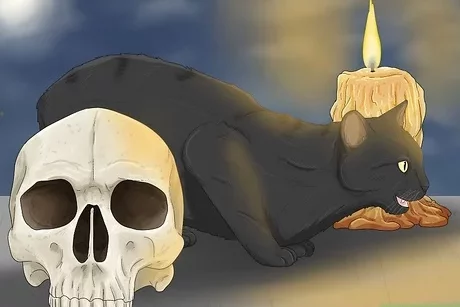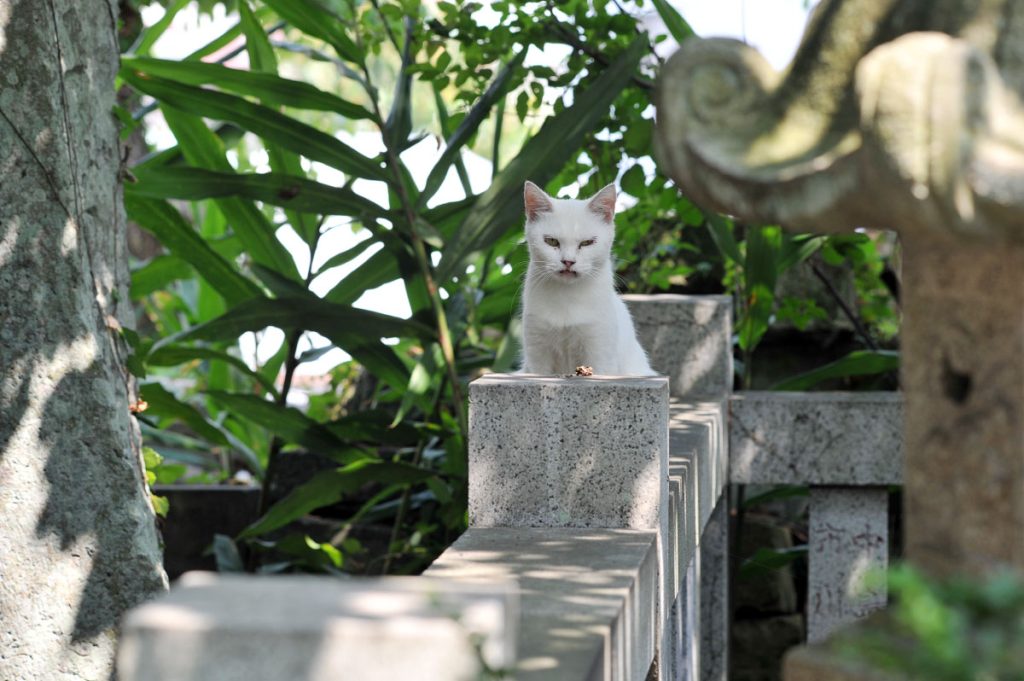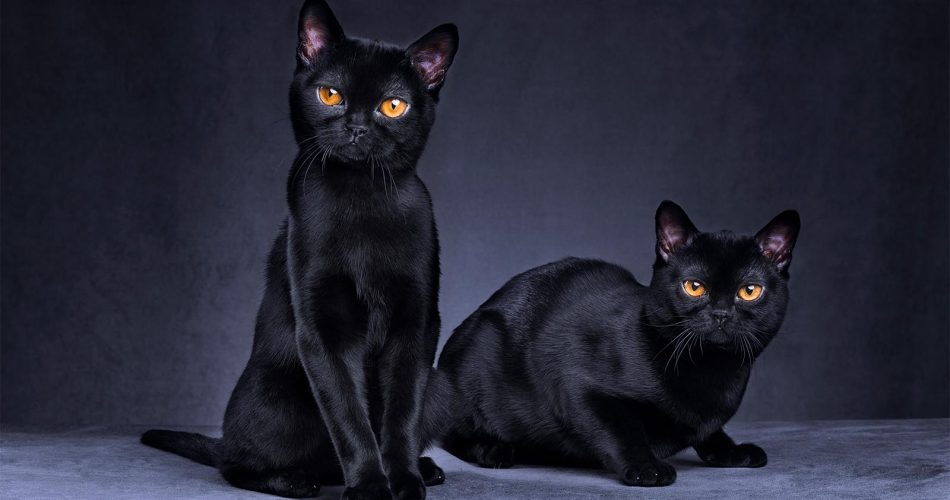Throughout history, cats have been revered, feared, and admired across various cultures for their mysterious and independent nature. In some societies, they are seen as symbols of good fortune, while in others, they are regarded as omens of misfortune or bad luck. This duality of cats as both symbols of luck and harbingers of doom has deep roots in cultural, historical, and mythological beliefs, making them one of the most complex animals when it comes to superstition and symbolism. The evolution of how cats came to embody such contradictory meanings is intertwined with their behavior, their roles in human societies, and the myths and folklore that developed around them.
The Mysterious Nature of Cats: Seeds of Symbolism
The way cats move—gracefully, silently, and with an almost otherworldly air—has long fascinated humans. Their ability to see in the dark, their keen hunting instincts, and their solitary nature all contributed to the perception of cats as creatures that straddle the line between the known and the unknown. As a result, many cultures began to associate cats with mystical powers and divine forces, both good and bad.
In early human history, people observed cats’ behavior in nature: their quiet prowling, their stealth, and their swift, decisive movements. Cats seemed to possess a mysterious connection to the unseen world, and their ability to stalk prey without making a sound was often interpreted as a symbol of hidden knowledge or secret powers. It is from this perception that many of the superstitions surrounding cats evolved, with some cultures viewing them as protectors of fortune, while others feared them as agents of ill luck.

Cats as Symbols of Luck
In numerous cultures around the world, cats have been regarded as symbols of good luck, prosperity, and protection. The positive associations often stem from the cat’s role in protecting homes and food supplies from vermin such as rats and mice, who could destroy crops and carry disease. Their contribution to human survival and prosperity over the centuries naturally led to the belief that cats were divine protectors.
One of the most recognizable symbols of good fortune associated with cats is the Maneki-neko, or “beckoning cat,” which is a popular figurine in Japan. This iconic cat, typically depicted with one paw raised in a waving motion, is believed to bring good luck, prosperity, and success to businesses and households. The Maneki-neko is often found in shops, restaurants, and even in homes, where it is placed to invite wealth and happiness. The origins of the Maneki-neko are tied to a popular Japanese legend, in which a poor temple priest’s cat raised its paw to beckon a passing nobleman into the temple, bringing him luck and financial blessings. Over time, the cat came to be seen as a good omen, symbolizing fortune and good luck.
In other cultures, cats were similarly thought to attract good fortune. In ancient Egypt, cats were revered as sacred animals, closely associated with the goddess Bastet, who was the goddess of fertility, home, and protection. Egyptians believed that cats brought prosperity and that they possessed divine qualities that shielded the home from evil spirits. It was said that owning a cat would ensure protection and bring harmony to the household.
In Chinese culture, cats are believed to bring good luck and are associated with the idea of protection. Cats, particularly the Maneki-neko, are considered symbols of attracting positive energy and warding off bad luck. The belief in cats’ good fortune is also rooted in the practical role they played in ancient times—keeping homes and grain stores free from pests, thus ensuring the family’s wealth and health.
Cats as Symbols of Misfortune
On the flip side, cats have also been regarded as omens of misfortune and even bad luck, especially in the context of Western superstition. The fear of cats, particularly black cats, has persisted for centuries, often tied to the belief that they were associated with witches, dark magic, and the supernatural.
In medieval Europe, black cats were often seen as companions of witches, believed to possess evil powers or serve as witches’ familiars. A common superstition held that if a black cat crossed your path, it was an omen of bad luck or impending doom. This belief was especially prominent during the witch trials of the 16th and 17th centuries, where black cats were sometimes accused of being the physical manifestations of demons or witches in disguise. This association with witchcraft led to widespread fear and persecution of cats, particularly black ones, who were thought to bring misfortune or act as agents of evil.
The idea of cats as bad omens is also connected to the concept of the “evil eye,” a belief that certain individuals possess the power to bring about harm or misfortune through a malevolent glance or stare. Cats, with their intense, unblinking gaze, were often believed to have the ability to curse those they stared at, adding to their ominous reputation. In some cultures, particularly in Europe, it was thought that a cat’s stare could cause illness or bad luck, further solidifying the notion of cats as creatures associated with the supernatural and mysterious forces beyond human understanding.
In addition to their connection with witchcraft, black cats in particular were believed to possess the power of transformation. In various European folktales, witches were said to shape-shift into black cats in order to carry out malevolent deeds, further enhancing their connection with dark forces. This fear of shape-shifting and magic played a significant role in shaping the perception of cats as symbols of misfortune in certain parts of the world.

The Evolution of Superstitions
The dual symbolism of cats as both bearers of luck and harbingers of misfortune reflects the complex ways in which human societies have interpreted their behaviors and roles. Their ability to move quietly, their nocturnal habits, and their elusive nature made them creatures of mystery. This ambiguity allowed cats to be revered in some cultures as protectors and spiritual guardians, while in others, their mysteriousness was feared and linked to darker forces.
Over time, these superstitions became embedded in folklore and traditions, often taking on new meanings and variations as they spread across cultures. In some places, the belief in a cat as a symbol of good fortune may coexist with the belief in its association with misfortune, with people simply choosing to focus on the aspect that aligns with their personal or cultural beliefs.
For example, while a black cat crossing one’s path is still considered an omen of bad luck in some parts of the Western world, in other cultures, it may be seen as a sign of good luck or a spiritual messenger. Similarly, the Maneki-neko in Japan, with its outstretched paw, is almost universally seen as a positive symbol of prosperity and good fortune. This demonstrates how the symbolism of cats can shift depending on regional beliefs, historical context, and cultural interpretation.
Conclusion: The Enduring Mystery of Cats
The symbolic status of cats as both symbols of luck and misfortune highlights the unique and complex relationship humans have with these enigmatic creatures. Cats, with their independent nature, mystique, and behavior, have captured the imagination of people across time and cultures. Whether as protectors of homes and bringers of prosperity or as ominous figures tied to witchcraft and bad luck, cats’ symbolic significance has evolved into a rich tapestry of beliefs and superstitions.

In the end, the dual nature of cats as symbols of both fortune and misfortune speaks to the broader human fascination with the mysterious and the unknown. Cats, in their quiet grace and elusive movements, remind us that the line between good and bad luck is often blurred, and sometimes, what is feared can also be revered. Whether as guardians of the home or bearers of ominous warnings, cats continue to hold a special place in our folklore and imagination, embodying the balance of light and darkness, good and evil, that is central to many of the world’s oldest superstitions.
